Pavement markings
Road markings guide and warn drivers as well as regulate traffic. Markings may be red, blue, yellow or white. They may be used alone or in combinations. Each has a different meaning.
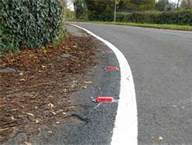

Red markings or reflectors on the pavement show areas not to be entered or used.
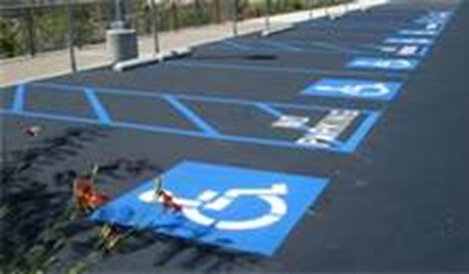
Blue markings show parking spaces for persons with disabilities.
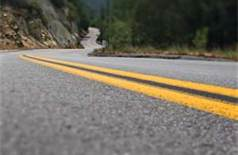
Yellow center lines mean two-way traffic, flowing in opposite directions.
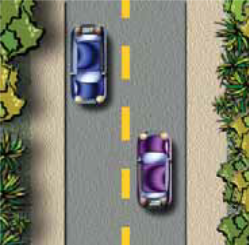
Broken yellow center lines mean that passing on the left is allowed in either direction when the way ahead is clear.
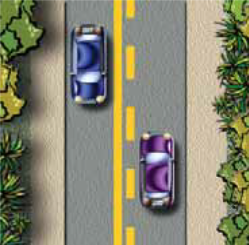
A broken yellow line alongside a solid yellow line means that passing is allowed from the side of the broken line, but not from the side of the solid line.

Double solid yellow lines mark the center of the road
and separate traffic traveling in two different directions. Passing is not allowed in either direction. You may not cross the lines unless you are making a left turn.
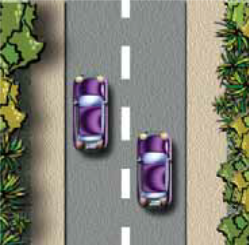
Broken white lines separate lanes of traffic going in the same direction. You may change lanes with caution.
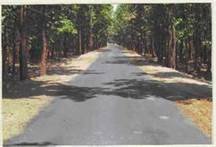
Many two-lane roads in Virginia do not have lane markings to separate the lanes. On an unmarked two-lane road, you may pass a slow moving vehicle on the left side if there are no signs prohibiting passing. Make sure that the way is clear.
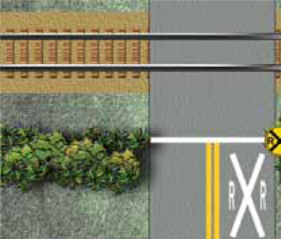
Pavement markings, consisting of an X and RR, may be painted on the pavement at the approach to some crossings. When approaching railroad tracks, be alert. Trains may approach the crossing at any time and from either direction. Unless you can clear the tracks completely, never start across the tracks. Make sure there is room for your vehicle on the other side of the tracks before proceeding.
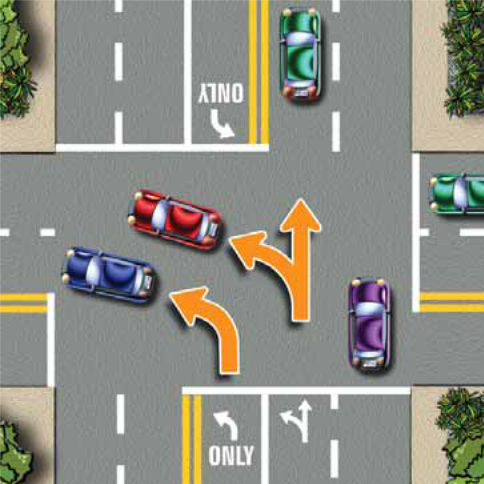
Solid white lines show turn lanes and discourage lane changes near intersections, and at other locations where lane changes might be dangerous. Solid white lines also mark the right edge of pavement. Arrows used with white lines indicate which turn may be made from the lane. Stop lines, crosswalks and parking spaces also are marked by white lines.
White lane arrows are curved or straight. If you are in a lane marked with a curved arrow or a curved arrow and the word ONLY, you must turn in the direction of the arrow. If your lane is marked with both a curved and straight arrow, you may turn or go straight.
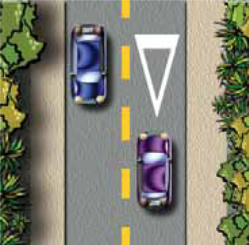
Yield ahead symbol is an outline of a triangle painted in the lane before the place where you must yield.

Yield line is a line of triangles extending across the roadway that may be used with a yield sign to show the point at which you must yield or stop, if necessary.

On three-lane roads with traffic moving in both directions, If both sides of the center lane are marked by a solid yellow line and a broken
yellow line, drivers traveling in either direction may use the lane for making left turns. However, they may not travel further than 150 feet in this lane.
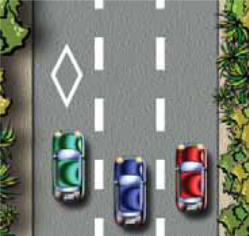
High Occupancy Vehicles (HOV) lanes are marked on highways by a diamond shape in the center of the lane. HOV lanes may also be special lanes separated by a barrier. During heavy traffic periods, HOV lanes are reserved for buses, vanpools, carpools, other high occupancy vehicles, motorcycles, and certain clean special fuel vehicles. Road signs show the minimum number of passengers a vehicle must carry (excluding motorcycles and clean fuel vehicles) to use the HOV lanes and the times that HOV restrictions are in effect.
If the lanes are separated by a barrier, they are reversible. This means that during certain times of the day, traffic flows one way. During other times of the day, traffic flows in the opposite direction.

The diamond-shaped marking may also indicate that the lane is reserved for use as a bike lane or bus lane.
A painted curb means that you must follow special rules to park there. Check with the locality for specific meanings. Generally, the colors on the curb mean:
White — Stop only long enough to pick up or drop
off passengers.
Yellow — Stop only long enough to load or unload.
Stay with your car.
Red — Do not stop, stand or park.
Blue — Parking is reserved for persons
with disabilities.